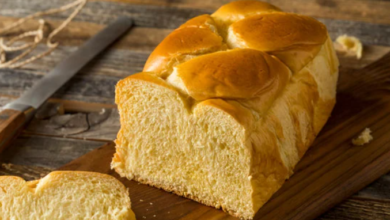The Ultimate Showdown: Multigrain Vs Multi Seed Bread
What To Know
- In the realm of bread, the debate between multigrain and multi-seed bread has been a topic of discussion for health-conscious consumers.
- However, if you value omega-3 fatty acids and a crunchy texture, multi-seed bread may be a better option.
- Both multigrain and multi-seed bread can support heart health, but multi-seed bread has a slight advantage due to its high omega-3 fatty acid content.
In the realm of bread, the debate between multigrain and multi-seed bread has been a topic of discussion for health-conscious consumers. Both options offer nutritional benefits, but they differ in their composition and overall impact on health. This blog post aims to provide a comprehensive comparison of multigrain vs. multi-seed bread, empowering you to make informed choices about your dietary needs.
Nutritional Composition
Multigrain Bread
Multigrain bread is made from a blend of whole grains, such as wheat, rye, oats, barley, and brown rice. It contains a higher fiber content than white bread, which aids in digestion and promotes satiety. Additionally, multigrain bread is a good source of complex carbohydrates, providing sustained energy throughout the day.
Multi-Seed Bread
Multi-seed bread is characterized by the incorporation of various seeds, including flax, sesame, sunflower, chia, and pumpkin seeds. These seeds add a crunchy texture and contribute to the bread’s nutritional value. They are rich in omega-3 fatty acids, fiber, and antioxidants, which support heart health and overall well-being.
Health Benefits
Multigrain Bread
- Improved digestion: The high fiber content in multigrain bread helps regulate bowel movements and prevents constipation.
- Reduced risk of heart disease: Whole grains contain beta-glucan, a soluble fiber that lowers cholesterol levels and improves blood sugar control.
- Enhanced satiety: Fiber helps you feel fuller for longer, reducing overeating and promoting weight management.
Multi-Seed Bread
- Improved heart health: Omega-3 fatty acids in seeds help lower blood pressure, reduce inflammation, and protect against heart disease.
- Antioxidant protection: Seeds are rich in antioxidants, which neutralize free radicals and protect cells from damage.
- Boosted nutrient intake: Seeds provide a concentrated source of minerals, such as iron, zinc, and magnesium, which are essential for overall health.
Differences in Taste and Texture
Multigrain Bread
- Taste: Multigrain bread has a nutty and earthy flavor due to the combination of different grains.
- Texture: It is typically denser and chewier than white bread due to the presence of whole grains.
Multi-Seed Bread
- Taste: Multi-seed bread has a more pronounced and robust flavor due to the addition of seeds.
- Texture: It is often crunchier than multigrain bread due to the presence of seeds.
Which Bread is Better for You?
The choice between multigrain and multi-seed bread depends on your individual dietary needs and preferences. If you prioritize fiber intake and digestive health, multigrain bread is a suitable choice. However, if you value omega-3 fatty acids and a crunchy texture, multi-seed bread may be a better option.
Considerations for Special Diets
Gluten-Free Options
Both multigrain and multi-seed bread can be made in gluten-free versions for individuals with celiac disease or gluten intolerance. Look for products labeled “gluten-free” to ensure they meet your dietary requirements.
Low-Carb Options
Multigrain bread typically contains more carbohydrates than white bread, while multi-seed bread may be slightly lower in carbs due to the presence of seeds. If you are on a low-carb diet, consider options made with almond flour or coconut flour.
What People Want to Know
Q1. Which bread has a higher fiber content?
A1. Multigrain bread generally has a higher fiber content than multi-seed bread.
Q2. Which bread is better for heart health?
A2. Both multigrain and multi-seed bread can support heart health, but multi-seed bread has a slight advantage due to its high omega-3 fatty acid content.
Q3. Which bread is more filling?
A3. Multigrain bread is generally more filling than multi-seed bread due to its higher fiber content.
Q4. Can I make multigrain or multi-seed bread at home?
A4. Yes, it is possible to make multigrain or multi-seed bread at home using whole grains and seeds.
Q5. Is multigrain bread always healthier than white bread?
A5. Yes, multigrain bread is generally healthier than white bread due to its higher fiber and nutrient content.
